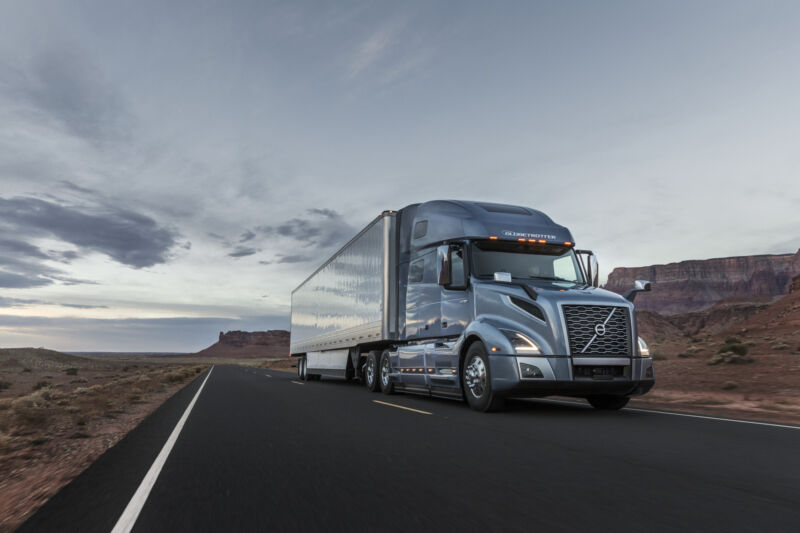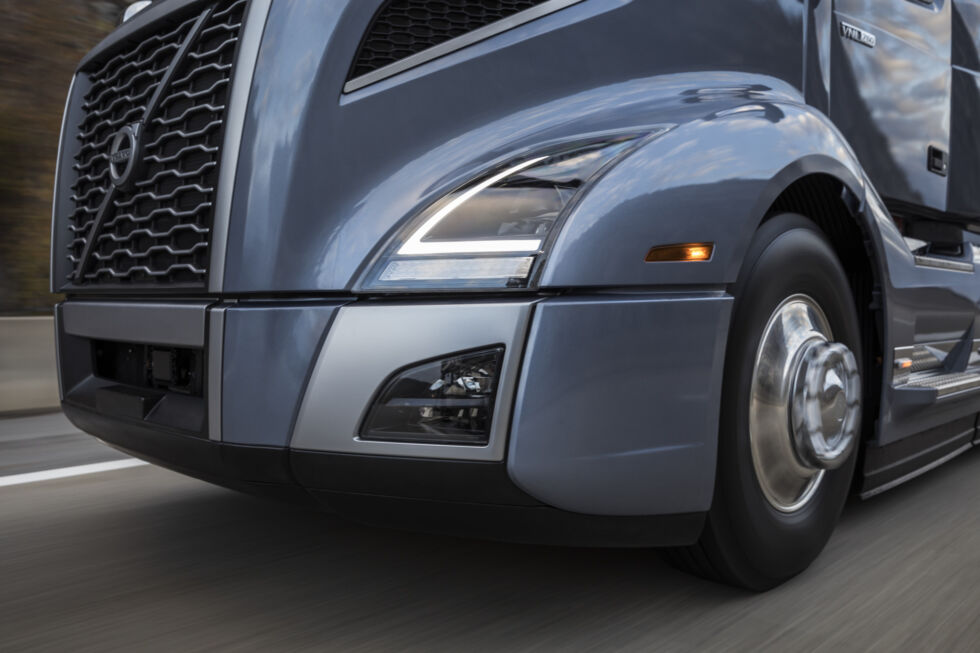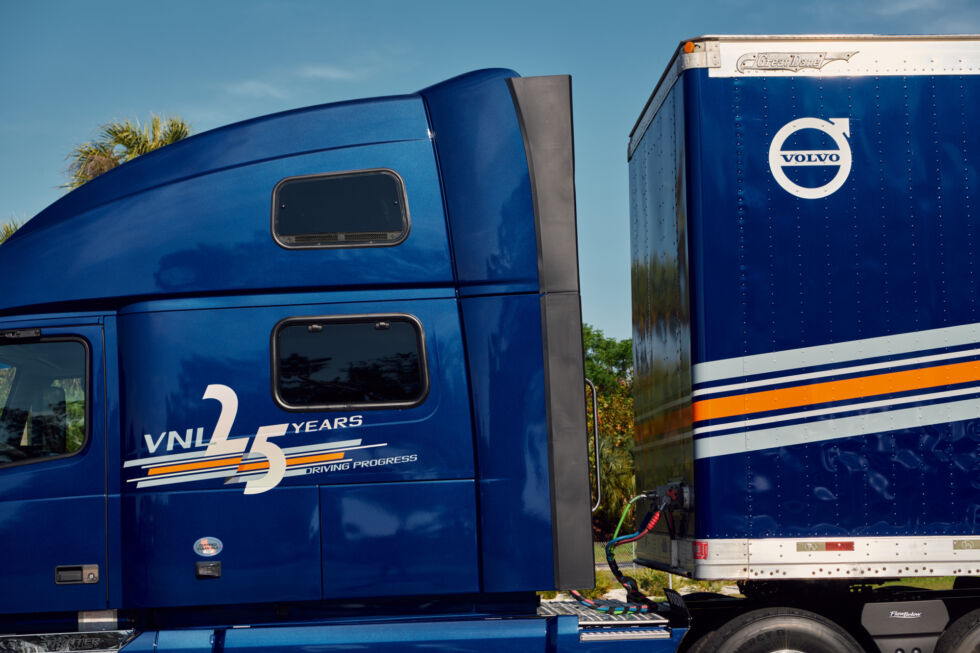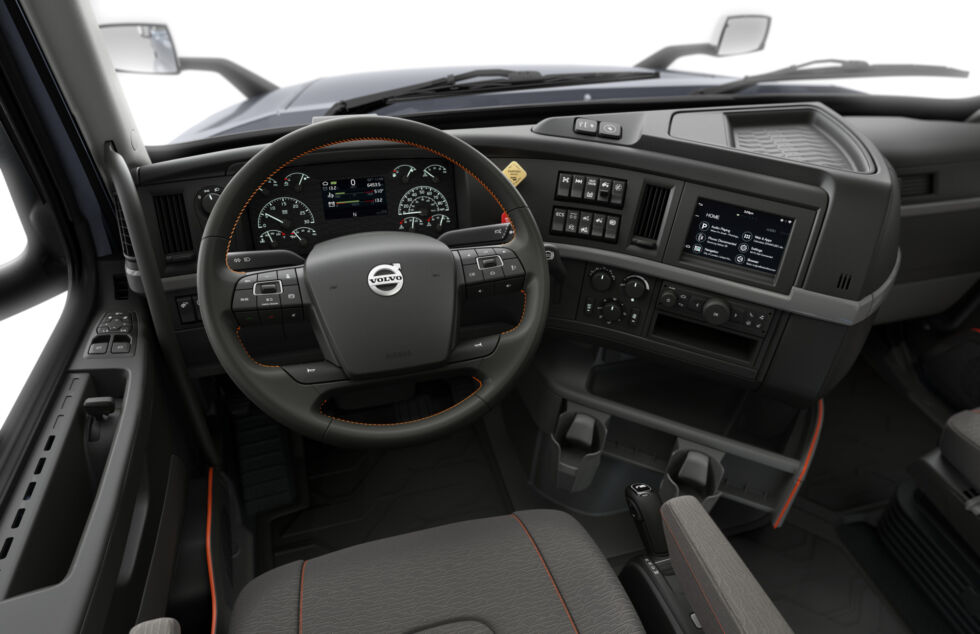Blindspot cameras and radars, a more efficient engine, and lower-drag cab all help.

A while ago we checked out Super Truck II, a Department of Energy program that has been challenging the makers of Class 8 heavy trucks—the ones that haul up to 80,000 lbs (36.3 tonnes) of freight. Truck companies like Daimler Trucks North America and Volvo Trucks North America were challenged to build a big rig that used 50 percent less fuel than the machines on the road in 2017, and they stepped up.
It’ll be a while before all of the efficiency improvements make their way onto production trucks, as that program has only just come to a close. But the truck makers are already starting to apply some of the lessons to production vehicles. Like Volvo’s new VNL, a Class 8 long-haul truck that’s been purpose-built just for our market.
“It’s replacing the previous generation that had been around for several decades,” explained Keith Brandis, VP of systems and solutions at VTNA. That was based on a global cab concept and design, where this was a completely new clean sheet for North America.”
Some readers are bound to be a bit disappointed that the VNL doesn’t improve fuel efficiency by quite as much as that ambitious research project. “I know 10 percent fuel economy doesn’t sound like much. But on a heavy-duty truck, when you’re going 8 to 8.8 miles per gallon [27–30 L/100 km], and you’re traveling 125,000 miles a year (201,000 km), that is a huge return for the customer,” Brandis countered.

Truck operators “want them to be productive out there and help them be profitable, help them be sustainable in their business,” explained Chris Stadler, product marketing manager at VTNA. “So that’s what they’re looking for that truck that’s going to help improve their bottom line.”
Reduced fuel costs certainly feed into that, but VNL is about more than just using less diesel. Volvo being Volvo, it’s also focused on making the truck safer. That helps the trucks keep running and protects the asset (plus its cargo), but it should also help fleets attract or retain their drivers—something more important than ever as the US currently needs about an extra 80,000 truck drivers.
I was curious about the North American-specific adaptations the VNL had compared to the previous global cab. For one thing, they’re not speed-limited, unlike heavy-duty trucks in Europe, which aren’t allowed to go faster than 56 mph (90 km/h). “So we had to take that in consideration in the design,” explained Stadler.
That meant a focus on reducing drag. “We made sure that design of this truck is fully aero’d up, as much as we can possibly put together on this truck. And we take the learnings that we got from Super Truck and Super Truck II to apply those to this design,” Stadler said. For example, there are cab-side fairings that connect to the trailer and keep the airflow from detaching between the tractor and trailer that boost overall fuel efficiency by 7 percent.
ARS VIDEO
How The Callisto Protocol’s Gameplay Was Perfected Months Before Release

The company eschewed going for something weird like a center-mounted seat or round windshield like some aerodynamic truck concepts in the past. Partly, that’s due to market acceptance—if it looks too weird, the companies that buy fleets of Class 8 trucks will take their orders somewhere else.
“When we started with the design of the cab—and especially the frontal area, because that’s 70 percent of the aerodynamics of the frontal area of the vehicle—we found that this wedge cab shape and a highly raked windshield were key determinants in improving the aerodynamics,” explained Brandis. As a result, VNL has a narrower hood than Volvo’s previous cab, and there’s much more attention to detail closing up gaps between panels.
Other details from Super Truck II didn’t make it to VNL, like the driver’s door. On the research project machine, this was behind the driver, entering the truck into the sleeper area rather than the cockpit.
“We talked to drivers and they said, ‘You know, that’s neat, but it’s not practical for us. We get in and out of the truck, especially in regional day cab applications, 30, 40, 50 times a day. That won’t work.’ So when you’re doing a one-off, you can do these concepts without necessarily taking them all to production. But the overall shape, dimensions, the technologies, the bonding of the windshield, many of those things are directly carried over into the new VNL,” Brandis said.Advertisement

VTNA has made some improvements to the truck’s diesel powertrain as well. It has switched from a six-wave piston to a seven-wave piston, and there are smaller needle control valves in the fuel injectors. There are smaller pistons for the D13 turbodiesel engine, with longer connecting rods and shorter pistons to “create better tolerances to fit in the cylinder to reduce that friction inside the cylinder,” Stadler told me. And Michelin has developed new lower-rolling resistance tires for the VNL that further improve efficiency.
As with Volvo road cars, the VNL was extensively crash-tested in Sweden during its development. “When it comes to the cab we do pillar impacts, back of cab impacts, frontal impacts—everything that we can do to help protect that driver in case of a [crash],” said Stadler. There are side curtain airbags on both sides of the cab to go with the steering wheel airbag, and an eCall feature that, like GM’s OnStar, alerts a call center if the truck crashes.
“And then when it comes to active safety, we are providing our own proprietary active safety system, which has been used in Volvo for a number of years in Europe. So now we’re bringing that technology over to North America and this new truck,” Stadler said.
This includes forward collision warning, adaptive cruise control, lane keep assist, and automatic emergency braking that can detect pedestrians and cyclists, as well as detecting cars, pedestrians, or bicycles to the side of the truck. There are even cameras mounted in the side-view mirrors, which switch to infrared at night, to identify vehicles or obstacles alongside the truck that could be in its path as it turns, together with blind-spot radar sensors that cover the whole 53-foot (16 m) length of the trailer.




